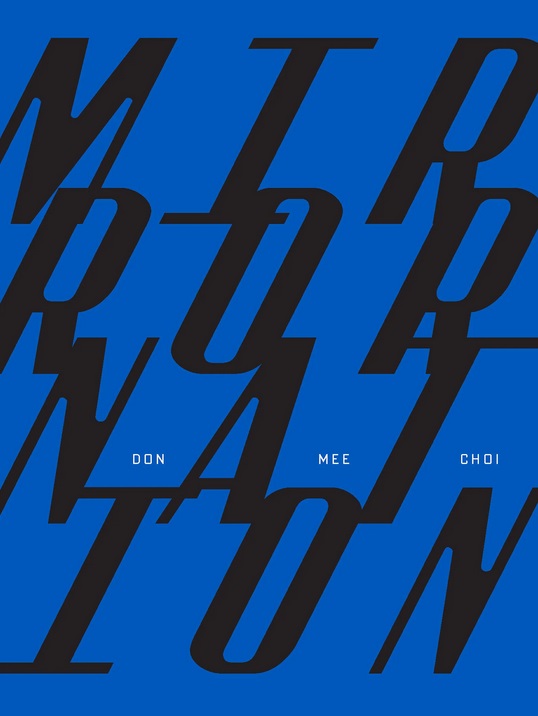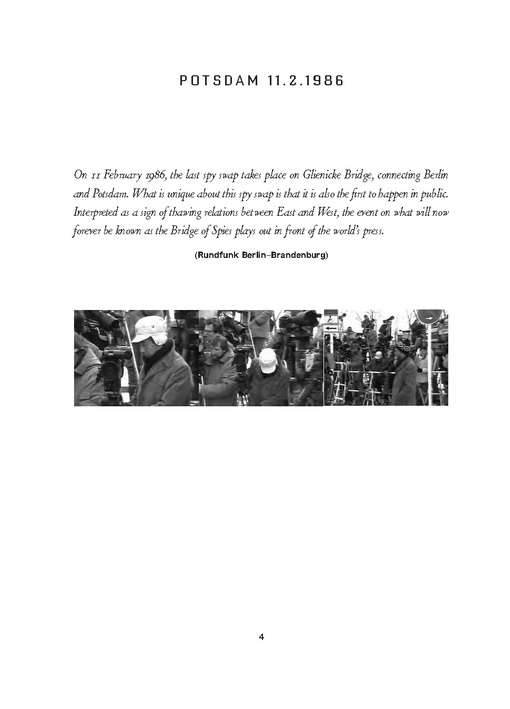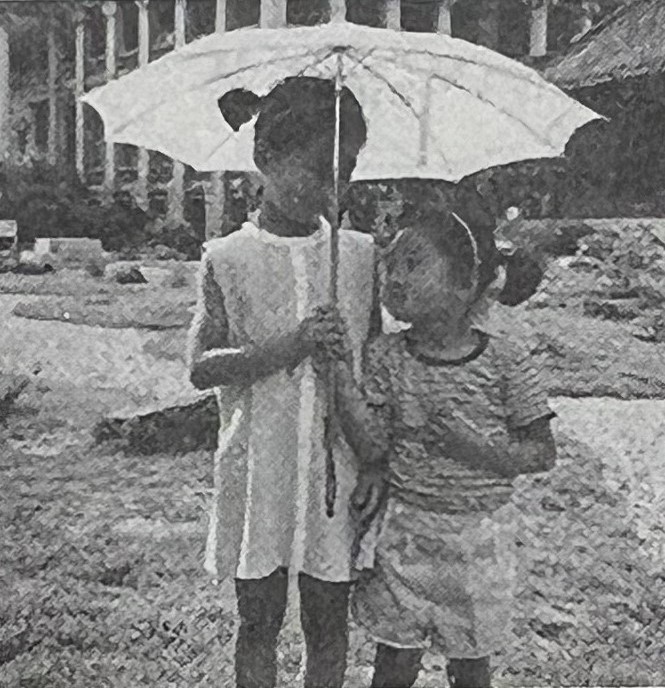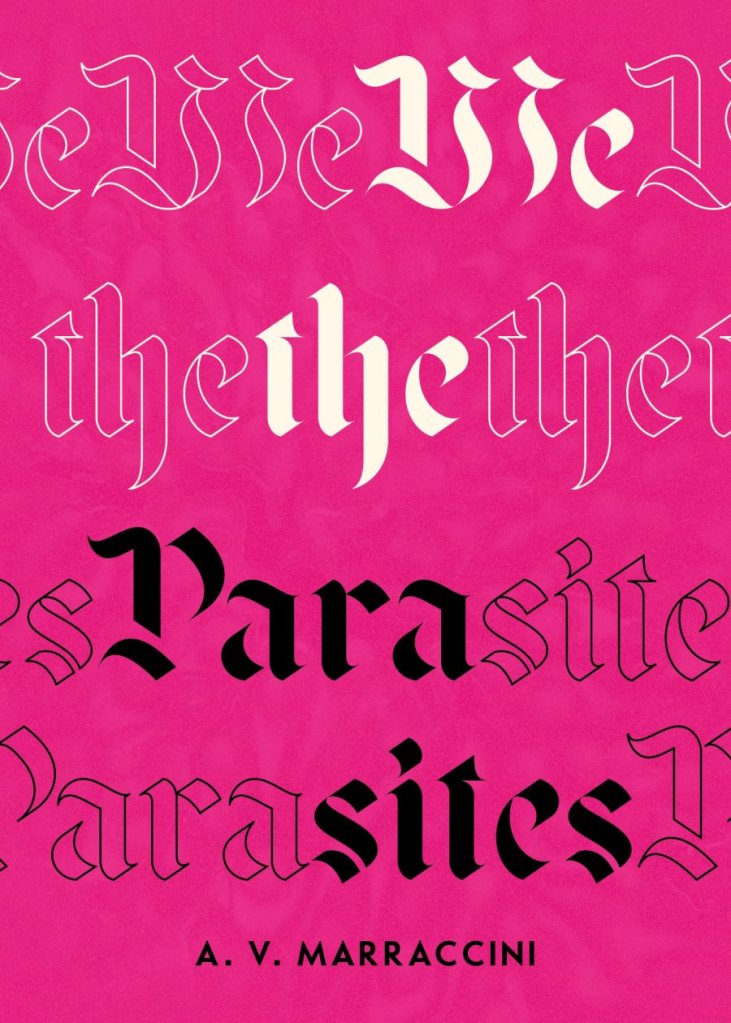His material world is set in the world of white learning. He is in the center of that and he flowers in it, not without some doubt, not without some shame. But he knows that he can only do so because there is another life into which his roots are sunk, a life to which he has access through language, through dance, through music.
Tunde
In Teju Cole’s third novel, Tremor (Random House, 2023), we follow Tunde, a highly respected photographer and writer born in Nigeria, who now teaches at Harvard. His work in both fields has made him famous enough to lecture and be feted around the globe. Wherever he goes, he seeks out the local culture—the museums, the artists, and, above all else, the music.
Not surprisingly, given the direction of so many novels these days, some of the key facts of Tunde’s biography closely match those of Teju Cole’s bio. He also teaches at Harvard and has been feted around the world for his mind, writing, and photography. Tremor is Cole’s third novel and in each of them the main character has always been based on an outline of Cole’s own life story. In his debut novel, Every Day Is for the Thief (2007), the book’s unnamed narrator is “a writer and photographer currently based in New York” who returns to Lagos, the Nigerian city where he was raised, where he finds himself surrounded by pervasive violence and corruption and a near total lack of what he then understands to be culture. The only signs of creativity and hope that he encounters are in the internet cafes, where he watches the “419 yahoo yahoos” (named after the section of the criminal code they violate), the young men whose endless email scams used to clog everyone’s email in-boxes. They tirelessly ply their trade, pay a small bribe when arrested, and then simply move on to a different internet café. In the end, the narrator fails to reestablish a close bond with his family or his countrymen, and he heads home to the United States.
In Open City (2011), Julius, an immigrant from Nigeria who is of mixed German and Nigerian parentage, is in New York studying to become a psychiatrist. He is something of a loner who likes to wander the city on foot and by subway, describing what he sees, hears, and thinks, giving us, among other gifts, a remarkable panoramic image of New York City and its history. Julius clearly loves his adopted city, but he is dedicated to scraping below the surface for the ghosts of New York’s shameful past, such as the history of the slave trade that operated out of the city’s ports, bringing riches to the city’s bankers and merchants. Throughout Open City, Julius is confronted with people who want to pigeonhole his identity and who want to recruit him to their vision or their cause. Africans claim his identity and heritage (even though he is half German), African Americans call him brother, Islamists try to radicalize him. But almost uniformly Julius wants no part of causes or labels, though eventually he is forced to ask himself if this kind of neutrality is possible in today’s world. To him it seemed as if the safest path “was by having no causes, by being magnificently isolated from all loyalties.” But, he asked himself, “was that not an ethical lapse graver than rage itself?”
In Tremor, Cole has answered this question. Tremor opens with a confrontation. Tunde is trying to photograph the honeysuckle hedge that separates his yard from his neighbor’s when “an aggressive voice” calls out. “You can’t do that here, the voice says, this is private property.” Tunde tenses up, retrieves his tripod and camera, and retreats. Despite his judicious retreat from a racist neighbor, he is an assertive activist. Cole’s new main character is no longer comfortable just discovering the ghosts of the past. He is teaching his students the hidden truths about history, he is teaching them ethics. He is tired of “the long and persistent history of white people thinking they know better than the rest of us.” He’s especially wary of culture and cultural spaces. He sees every museum as a “a storehouse of other people’s stolen worlds” and he wants to hold them accountable for the objects they have acquired unlawfully, particularly objects gathered up from once colonized nations. He teaches his students “to always stay alert for the ‘uh-oh’ moment, to be primed for that incident in which some additional wickedness emerges in the conventional story being told.”
We follow Tunde as he teaches, goes antiquing with his wife, interacts with friends and colleagues, and travels to Nigeria several times. In Tunde, Cole has created a main character who so dominates his novel that he consumes nearly all the acreage of the book. Tunde’s wife Sadako, who was born in Japan, is a character we see only infrequently. But their relationship clued me into aspects about him that made me realize that Tunde is not the flawless character the book seems to want him to be. In one of the first times we see the couple interacting together, Tunde listens to Sadako fall asleep next to him in bed and then he immediately turns his thoughts to how much he enjoys talking with his Harvard colleague Emily, because she is one of those people “who have stared into the immense complexity of the Andromeda galaxy or of C. elegans or Sanskrit or geometry and have made it communicate with the immense complexity of their own brains.” We do not learn anything more about Sadako before she abruptly moves out of their house one day and Tunde seems to have no idea why. “Who knows what’s happening in someone else’s head?” he thinks.
Eventually, Sadako returns to the marriage, not entirely sure that Tunde understands her any better. “The ripple back in September seemed to take him by surprise. But that was the problem, that he somehow hadn’t seen or sensed what was building up. She loves him for his intelligence and kindness. She loves him above all for his wish to be good. But a wish is not the same as a will and sometimes she is troubled by how unaware he can be of his failings.” As if to demonstrate that unawareness, almost as soon as Sadako returns, Tunde departs for a long visit to Lagos, leaving Sadako to celebrate Thanksgiving with her family.
“You”
Throughout Tremor Tunde addresses a mysterious absent someone as “you.” This absent friend turns out to be Mark, a man who served as his correspondent and mentor for more than twenty years. The two met by accident at the Kunstmuseum Basel where they bonded over several paintings by Hans Holbein that they both admired. But “music was the emotional core of the friendship.” Mark, who has now been dead for three years, advised Tunde on specific recordings to listen to. Over the years, they went to concerts together in different cities and talked endlessly about music. Tunde speaks to him and thinks of him frequently throughout the novel. After an exceptional night of music and dancing in Lagos, for example, Tunde “thinks about how he would describe to you the exquisite embodiment at the heart of it. You were not a dancer but you were a listener and he wishes he could tell it to you.”
Lucas
Globetrotting Tunde seems to make friends wherever he goes, even in Lagos. He talks freely with strangers in clubs, smokes marijuana with them, and dances with them. But when he meets Lucas, the son of his mentor, for the first time over lunch, he’s oddly chilly. “The son is a stranger to me and friendship is nontransferable. Even as we sit down to lunch I know I will do my duty and move on. I needn’t become friends with him.” It stuck out to me like a sore thumb that Tunde was oddly unreceptive to Lucas. This is the son of the person Tunde respected more than anyone he knows and with whom he corresponded by letter, email, or phone several times a week for more than two decades. Cole makes Tunde’s attitude so clear that it seems like it must indicate something, but I’m damned if I know what.
“Effortless Virtuosity”
Tremor echoes with music of all kinds, from a Deniece Williams’ song on the radio on one of the opening pages to John Coltrane’s “Naima,” playing at a party on the closing pages. Tunde listens to a wide range of popular music, jazz, classical music, and West African music. The high point for him is undoubtedly three consecutive nights attending live music at clubs and other venues in Lagos. On the final night he listens to several bands that had their start in the early 1970s, “in that age of optimism when the colonial shackles were newly off and the future was bright.” “Whatever was played was played with focus and with that effortless virtuosity that is a byword for Manding musicianship—but one should never call virtuosity effortless.” Tunde’s goal is to lose himself—and the world—through music. “Something exists in spite of everything we know to be true of the world. Life is hopeless but it is not serious. We have to have danced while we could and, later, to have danced again in the telling.”
Cole writes exquisitely about music and how people hear it, and he is especially attuned to Coltrane. “Coltrane enfolded into his sheets of sound the eloquence of the AME Zion Church but also the wilder and weirder dissonances of Holiness practices. His choices are musically driven but in his spirit is a consistent preference for ecstasy over entertainment. Every note he plays is air from his body, every song on these albums a transcript of his breath.”
The Twenty-Four Voices of Lagos
In one long chapter, Cole lets twenty-four residents of Lagos tell us about their lives, hopes, and struggles in their own voices. This is when it becomes eminently clear that, even though much of the novel takes place in and around Harvard University, Tremor is really a novel whose heart and soul is in Nigeria. In this chapter, each resident of Lagos gets two or three pages to create a snapshot of their current moment. One woman is suing her brother because he is selling their father’s property but not sharing the proceeds with her. One man describes getting scammed in a business deal. One person is in the midst of transitioning to become a woman. One boy describes a violent home invasion that happened to his family. The cumulative effect is to give us a striking and intimate picture of people struggling to survive daily and facing an endless string of adversities that include gangs, poverty, alcoholism, and corruption, with only their willpower and wits to help them keep going. In the final segment a man tries to drive home one night through flooded roads because parts of Lagos are built on landfill, while roads in another part of town are blocked because a fuel tanker has overturned and exploded. “The city was drowning and burning at the same time.”
Immediately following the voices of the citizens of Lagos, we get Tunde’s impressions of Lagos in a chapter in which every paragraph begins with a variation of “When he returned to the city he realized that. . .” Tunde characterizes Lagos in several ways. As a city in which “the national religion” is a lottery that confirms in its population “the brutal intuition that life only makes sense when there are a few winners and numerous losers.” As a city that feels like a two-dimensional stage set filled with four-dimensional people who “seduce each other all day long, their bodies smelling of sweat, pheromones, and the restlessness of life,” and “make love with the tremulous joy of first-timers, the solemnity of undertakers, the insouciance of professionals, the vigor of perverts, and the untiring ardor of immortals.” A city in which “one wrong move could be fatal and so no one makes a wrong move.” A city in which the people are like reeds; “they bend with the wind in order not to be broken by it.” Despite the fact that “there might be something rotten beneath” Lagos, Tunde thinks it is “a sybaritic paradise.” “The city is unique in having neither aristocrats nor untouchables. Its citizens are radically equal.” The Teju Cole who found Lagos disappointing and lacking in culture when he wrote Every Day Is for the Thief, now thinks the city is pretty special and bursting with art.
But Lagos has one final surprise for Tunde. One day he sees “a twin he never knew he had.” It’s his doppelgänger, a harsh reminder of his own “replaceability,” his own mortality, that shakes Tunde so much he leaves Lagos the same day.
It’s not clear what the appearance of Tunde’s doppelgänger signifies. Other than returning home immediately, Tunde doesn’t change in any apparent way. In fact, shortly after his return he doubles down on his belief that it is no longer tolerable to be politically neutral. He decides to research and critique a piece of temporary public artwork that was installed in an outdoor space at Harvard where he frequently walks, even though the installation occurred twenty-five years earlier, “well before my time,” as he puts it. Tunde has been haunted by the fact that, in the eighteenth century, the President of Harvard maintained four African American slaves in a house nearby. Therefore, he is struck when he reads in the catalogue about the public artwork that the artist had said that he did not want “to be positioned in the sense of appearing to celebrate [Harvard] or to be positioned by somehow seeming to critique it.” “Why” Tunde asks, “would he not wish to seem to critique the institution” which once housed slaves? Tunde argues that by taking no position, the artist did celebrate Harvard and its racist history. “There is no view from nowhere,” he declares.” It is not possible to be neutral.
Ω
Tremor is a compelling book full of compelling and important messages. Cole writes powerfully—no, brilliantly—about race, history, and culture. He is one of our most eloquent writers about the arts, especially music. But if I think about Tremor as the novel that it’s subtitle proclaims and not as an extended essay on racism or post-colonial violence or cultural theft, then it’s apparent that Cole is stretching the novel’s form tightly and thinly like a drum skin over the framework of the essay format. In fact, there is a literal transcription of a lecture that Tunde gives at the Museum of Fine Arts, Boston in the middle of the book. Tunde is the novel’s only well-developed character. Everyone else is little more than a stick figure, including his wife, Sadako. We are told that she works for a pharmaceutical company, but apparently it isn’t important enough that we know whether she is a secretary, a research scientist, or the company president.
More importantly, Tunde strikes me as a slightly worrisome messenger to be delivering such critical messages. He has a batch of character flaws that the book apparently wants us to overlook. It’s obvious that he loves his wife, Sadako, but it’s on his own terms and heedless of her needs. When he meets his revered friend’s son, he can think only of himself. Like many individuals who have been elevated to certain heights in society, he has become blind to the distance between his own globe-trotting lifestyle and that of the ordinary people he tries to reach in his classes and lectures. For example, when a night of music and dancing in Lagos “called out” to Tunde of “other nights of desire and satiation like the cold night we danced in Harlem or that time on Victoria Island when the vice president’s daughter had too much to drink or that other night in São Paulo when we went to Avenida Liberdade or that other night of Amapiano among strangers in Cape Town, that night in Beirut, that night in Berlin, that night in Bogotá,” Tunde seems to have no awareness that he is not moving in the same circles as 99% of the planet. Elsewhere Tunde tells us, without any apparent irony, that “the work I do takes me to places where I am received as a guest of honor, places where I try to think and speak and where I try to avoid speechifying.” And yet he is constantly speechifying, constantly trying to tell others how to think, how to behave, as his ethical lessons and historical “uh-oh” moments unspool page after page.
One of the few times when Tunde has a tiny glimpse of self-awareness that might let him see himself differently comes when he views four photographs by Gilles Peress in a museum. Peress is a well-known documentary photographer, a fighter for the underdog, and a Professor of Human Rights at Bard College. Tunde observes that these four photographs by Peress were “taken” in Iran and Azerbaijan and then he parenthetically adds: “’Taken’ I say when describing other people’s photographs but for my own I default to ‘made’—because I can vouch for my own intentions?” The presence of that question mark suggests that Tunde is, for once at least, questioning the implications of his own vocabulary. Throughout the novel, it feels as if Cole doesn’t trust his readers enough to be subtle, to infer, to show and not tell, as the old creative writing cliché goes. He has spent the last dozen years writing essays, and perhaps that habit is hard to break.
Tremors
The book’s title refers to a trio of earthquakes that are briefly mentioned. As a student, Sadako mildly experiences the Kobe earthquake of 1995 while living in Osaka, twenty miles away. There are also references to the 1990 earthquake in northern Iran and the 2010 earthquake in Haiti. But personal tremors are the important ones. When he learns that his colleague Emily has colon cancer, Tunde suddenly realizes that the ground below any one of us can open suddenly and swallow us. “Life is not only more terrible than we know it is more terrible than we can know.” (It’s hard not to notice that Tunde is considerably more disturbed by Emily’s cancer than he was when his wife temporarily left their marriage.)
The final tremor comes at the end of the book when Tunde himself is mysteriously shaken. After he and Sadako host a party, he goes out in the late hours on a clear winter night and successfully photographs the honeysuckle hedge without incurring the wrath of his neighbor, who is most likely asleep. But after going to bed, Tunde has an attack of vertigo and “the room seems to be moving.” Eventually the vertigo subsides. Sadako soothes him and he falls asleep. The last line of the book is: “I slow my breathing and soon I hear nothing.” Is this attack of vertigo meant to signify something? Self-awareness? A change of character? We are not given a clue, we can only speculate wildly. Hopefully, Teju Cole’s next novel will point the way.


























